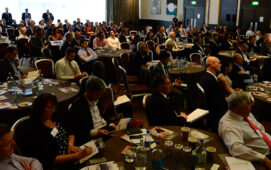Asset Control has released details of its implementation of the AC PriceMaster platform at Standard Bank last year. The Hong Kong- and London-based bank announced last spring that it was live at four main offices with AC PriceMaster for management of market rates in support of its risk analysis activities (Reference Data Review, May 2005).
In a case study published by the company this month, Asset Control says Standard Chartered was seeking to migrate off a legacy system from 1997/98 that was overstretched and had been sold by the original vendor to another supplier. As such, it was no longer being developed, and Standard Chartered could see no route forward to extend its functionality.
The system was being used to handle market rates in support of its risk management function across foreign exchange, derivatives, fixed income and other instruments. Because of the lack of further development, the bank was finding it difficult to add new instrument types to the system. Meanwhile, volumes were increasing, leading to unacceptable levels of system downtime, which in turn required more manual checks on data validity.
Standard Chartered conducted what Asset Control calls an “exhaustive selection process.” According to Robert Oddy, global market systems manager and project manager for the rates system implementation, “Once you’ve invested in a product like this, you can’t afford to change your mind and throw it out. So it’s worth spending that extra month on selection to ensure you get the right system.”
The bank opted to take a centralized data management approach, selecting Asset Control on the basis of reliability, scalability and flexibility. The implementation was conducted in two phases, handled by IT teams in the bank’s London, New York, Mumbai and Singapore offices.
In particular, Standard Chartered needed a platform that was capable of handling a range of internal and external data sources and multiple instrument types, as well as providing automatic data capture in local time zone notation, data validation, cleansing, audit and control functions.
The bank needed the system to be able to capture and normalize data from several specific sources, including Reuters, Bloomberg and Telekurs, as well as proprietary information and other data in formats adhering to ISO data standards. The AC PriceMaster system was modified for Standard Chartered to allow local time-stamp capture for end-of-day data delivery. Says Oddy: “At the end of the day, a rate is just a piece of data. It has no intrinsic value. It’s the way you analyze it, review it, time-sequence it and relate it back to the underlying framework that counts. That’s the value-add.”
In addition, Standard Chartered needed the system to aggregate data to form a golden copy data set. As such, AC PriceMaster would act as the system of record for market rates information. Data, meanwhile, would be validated at different levels, from the point of capture through to distribution to receiving applications. This entailed cleansing according to rules set up in the system. Finally, the system continuously checks tolerances so that any sudden spurts or excesses could be picked up immediately.
The implementation was delivered over a six-month period. The IT teams ran systems in parallel for two weeks prior to going live. The AC PriceMaster platform featured interfaces to eight of Standard Chartered’s core banking systems. With a centralized database located in London, access to the system worldwide is via the AC Desktop client system.
According to Asset Control, certain limited developments were required for the first phase, the largest of which involved the calculation of zero curve algorithms. Additionally, the bank needed to value trades at the end of the day in each of its market centres, in Asia, India, the U.K. and the U.S. This requirement was complicated by the fact that two of these centres were switching to summer daylight savings, requiring the system to collect data in local time zones to ensure consistency as the clocks changed.
Subscribe to our newsletter




